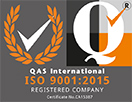Our flooring industry blog is a treasure trove of information, including incredible insights and tips on how mats and matting can enhance your business and brand.
Stay shock-free! Discover the power of electrical safety mats for a safer workplace. Choose Electrosafe from Mats Direct today!
LEARN MORETired of getting lost in a crowded marketplace? Stand out with branded logo floor mats! They boost brand recognition, create a welcoming environment, AND keep your floors clean.
LEARN MOREYou know you need an entrance matting system! But, you are not sure where to start? Read this blog and get step by step help today...
LEARN MORENew To logo Mats? The secret sales person that you only pay for once. Logo mats will build your brand and increase your sales within your business.
LEARN MOREExplore The Possibilities!! Here we explain the endless common uses of brand and printed mats & carpets at events and how they help to build your brand.
LEARN MOREHere are 7 tips to ensure you get the best logo mat in terms of quality & ROI that will build your brand in 2025.
LEARN MOREHow to find the perfect logo entrance mat for your business without sacrificing functionality. We will tell you what to look for!
LEARN MOREWhat's the difference & how do you choose between Entrance matting & Barrier matting? Read more to help you decide.
LEARN MORECoir vs. Coil Mats: Fight grime & moisture! Pick your entrance warrior. Clean floors guaranteed. Read on to pick the best choice for your business.
LEARN MORESlippery floors? Find out how barrier mats help reduce the dangerous effects, along with the benefits for both your business and your staff.
LEARN MOREGrime Trap to Brand Icon! Elevate your entrance with custom barrier mats. Make a lasting impression. Read to ensure clean floors & strong branding.
LEARN MOREStop Dirt & Welcome Customers! Discover the best barrier mats for any business: coir, rubber & more. Improve safety, cleanliness & branding.
LEARN MOREElectrical Hazards Demand Vigilance! Make sure your mats are up to the job. Protect against shocks, extend mat lifespan and protect your staff.
LEARN MOREDon't Get Shocked! Protect your workforce from electrical hazards. Choose the right safety matting for your business - voltage, material, & more.
LEARN MOREAvoid Shocks, Choose the Right Mat! A guide to Electrosafe mat classes. Find the perfect voltage protection for your needs and stay safe!
LEARN MORE
MatsDirect UK Ltd is fully ISO 9001:2015 (Quality Management System) accredited, which means we have demonstrated our ability to consistently provide products to the industry’s highest quality and standards.
Now, how’s that for peace of mind?

Website designed by Highpoint Media























